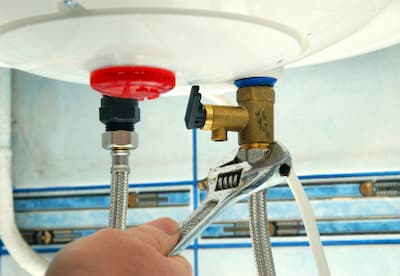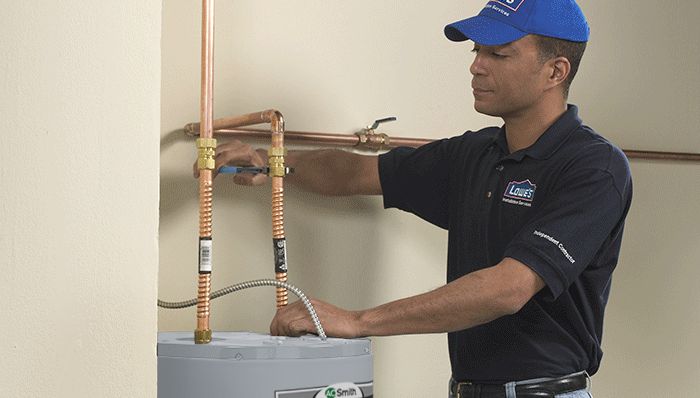Right here further down you'll find additional worthwhile insight in regards to How to Maintain a Hot Water Heater in a Few Simple Steps.

Hot water is necessary for day-to-day convenience, whether it's for a revitalizing shower or cleaning dishes. To guarantee your warm water system runs effectively and lasts much longer, normal upkeep is essential. This short article gives functional ideas and insights on how to maintain your home's hot water system to stay clear of interruptions and costly fixings.
Introduction
Maintaining your home's hot water system might seem overwhelming, yet with a couple of easy steps, you can guarantee it runs smoothly for years ahead. This overview covers every little thing from comprehending your hot water system to DIY maintenance ideas and knowing when to call in specialist help.
Importance of Keeping Your Warm Water System
Normal upkeep not just expands the life-span of your warm water system however likewise ensures it runs efficiently. Disregarding maintenance can lead to reduced efficiency, greater power expenses, and even early failing of the system.
Indicators Your Warm Water System Demands Maintenance
Knowing when your warm water system requires attention can prevent major issues. Watch out for indicators such as irregular water temperature, unusual sounds from the heater, or rusty water.
Understanding Your Hot Water System
Before diving into maintenance jobs, it's valuable to understand the standard components of your hot water system. Generally, this includes the water heater itself, pipes, anode rods, and temperature controls.
Month-to-month Upkeep Tasks
Regular regular monthly checks can aid catch minor concerns prior to they escalate.
Flushing the Hot Water Heater
Purging your hot water heater removes sediment build-up, boosting performance and extending its life.
Monitoring and Replacing Anode Rods
Anode poles avoid deterioration inside the storage tank. Inspecting and changing them when broken is important.
Evaluating and Adjusting Temperature Settings
Changing the temperature setups makes sure optimum efficiency and safety and security.
Do It Yourself Tips for Maintenance
You can do a number of upkeep jobs on your own to maintain your hot water system in top problem.
Checking for Leakages
Routinely examine pipes and links for leakages, as these can bring about water damage and greater costs.
Checking Stress Relief Valves
Testing the pressure safety valve guarantees it operates properly and protects against too much pressure buildup.
Insulating Pipes
Shielding warm water pipes reduces warmth loss and can conserve energy.
When to Call a Professional
While DIY maintenance is advantageous, some issues call for expert competence.
Complex Issues Requiring Specialist Assistance
Examples consist of major leakages, electrical problems, or if your water heater is continually underperforming.
Routine Professional Upkeep Advantages
Specialist maintenance can include thorough examinations, tune-ups, and making sure compliance with safety and security standards.
Verdict
Routine upkeep of your home's warm water system is crucial for efficiency, longevity, and expense savings. By complying with these tips and recognizing when to seek expert help, you can make sure a trusted supply of hot water without unforeseen interruptions.
How to Maintain an Instant Hot Water Heater
Before tinkering with your hot water heater, make sure that it’s not powered on. You also have to turn off the main circuit breaker and shut off the main gas line to prevent accidents. Also turn off the water valves connected to your unit to prevent water from flowing into and out of the appliance. 2. When you’re done, you have to detach the purge valves’ caps. These look like the letter “T†and are situated on either side of the water valves. Doing so will release any pressure that has accumulated inside the valves while at the same time avoid hot water from shooting out and burning your skin. 3. When the purge valves’ caps are removed, you have to connect your hosing lines to the valves. Your unit should have come with three hoses but if it didn’t, you can purchase these things from any hardware or home repair shops. You can also get them from retail stores that sell water heating systems. Read the user’s manual and follow it to complete this task properly. When the hosing lines are connected, open the purge port’s valves. 4. You should never use harsh chemical cleaners or solutions when cleaning your unit. Make use of white vinegar instead. It should be undiluted and you’ll probably use about 2 gallons. 5. Now flush your water heater. This task should probably take about 40 minutes. We can’t give you specific directions for this because the procedure is carried out depending on the type, model and brand of your heater. With that being said, refer to the user’s manual. 6. When you’re done draining the unit, you have to turn off the purge port valves again. Remove the hosing lines that you earlier installed on each of the water valves. Put the valve caps (purge port) back in their respective places and be very careful so as not to damage the rubber discs that are found inside these caps. 7. Now that everything’s back in place, check your user’s manual again to find out how to reactivate your water heating system. 8. Once it is working, turn one of your hot water faucets on just to let air pass through the heater’s water supply pipes. Leave the tap on until water flows smoothly out of it. https://www.orrplumbing.com/blog/2014/september/how-to-maintain-an-instant-hot-water-heater/

I ran across that review on Tips For Maintaining Your Hot Water Heater while doing research the web. If you please set aside a second to promote this blog if you appreciated it. We value your readership.
Click